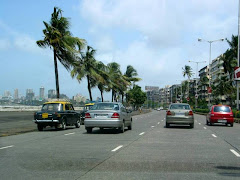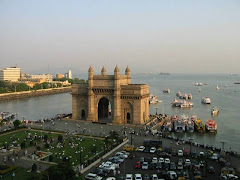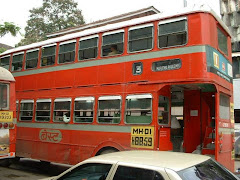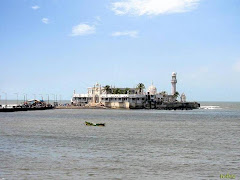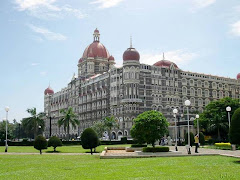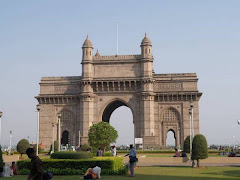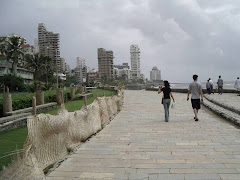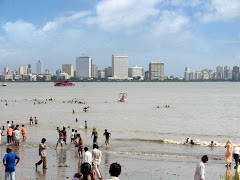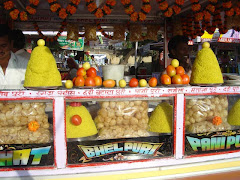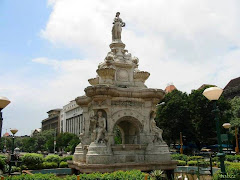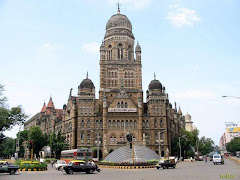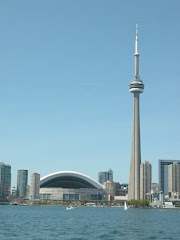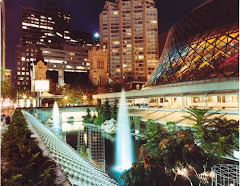GOANS ARE ALL OVER THE WORLD, DOING ALL KINDS OF THINGS
By Frederick Noronha
Some helped build the steel frame of British colonialism. Others spent their lives fighting alongside their Black brethren against British and other foreign rule in East Africa.
Some were cardinals, while others were Free Masons. From the tiny region of Goa came forth world-class men (and women) of medicine, super- cops, scientists and sculptors. And more. If you thought Goan achievers were just in a field or two, then check up their impressive list of achievements.
There are names that pop out from the world of music, the military, economists, educationists, engineers, and even governors and ambassadors.
This becomes clear in a recently-published book by octogenarian Dr. J.Clement Vaz. At 82, and despite living outside Goa for long, Vaz remains a Goaphile at heart, and tackles the task with keenness. Fortunately, author Vaz has undertaken this labour of love -- most books on Goa hardly rake in profits -- at a suitable point of time.
Vaz's life spans colonial and post-colonial Goa. Had he not written it, many of these personalities would have been unknown to or forgotten by the generation of youngsters which don't have much contact with the past and can't read Portuguese either. Vaz has come up with an impressive listing.
Early on, Goa gained a plethora of big names amidst the Catholic religious. There were two Cardinals -- Valerian Gracias in Bombay and Joseph Cordeiro of Pakistan -- and two Apolostic Nuncios. Eight archbishops of Goan origin have served in Bhopal, Delhi, Calcutta, Nagpur, and Agra, besides Goa itself. Vaz lists over three dozen bishops too, the latest being Filipe Neri Ferrao, who was consecrated auxiliary bishop of Goa in 1994. Later, people from this region went to excel in many other fields.
Great men of science also have the made-in-Goa stamp on them. One of India's pioneer of the food-irradiation programme was Dr Norman Lewis of Goa. Other prominent men of science included medical practitioner Emidio Afonso, who was also a mini-sculptor, a violinist or an ingenious mechanic. Just out of his teens, he reconstructed with the simplest available material a simplified version of Sir J C Bose's crescograph, an instrument for measuring the sensitivity of plants.
It was a Goan who discovered protozoa, parasites, microbes and viruses many of which bear the Latin name given by him followed by the name "de Mello" as the discoverer. Dr Froilano de Mello (1877-1955) was a research scientist of high calibre, a successful professor, a literary man, and an eloquent impromptu speaker. He did remarkable work for improving the health of the malaria-endemic city of Old Goa by mapping the entire area so as to discover the source of malaria. By 1927, this work was completed and over 18,000 wells with stagnant water were uncovered in the jungle that had grown where Old Goa existed two centuries earlier. He fought valiant battles against TB and leprosy. He was hailed as one of the foremost leprologists.
Datta V. Naik (50), known as Kumar to his friends, is a product of St. Xavier's Mapusa who showed that youngsters given the opportunities in Goa can even receive a Certificate of Recognition from the US National Aeronautics and Space Administration (NASA).
Remember the Bunsen burner from your chemistry lab? It was Goan scientist Agostinho Vincente Lourence (b.1862) who went to Germany to work under the famous chemist Bunsen. There's a bust of Lourence in the Lisbon Academy of Science, which stands besides Lavoisier and others.
There's also a bust at the Municipal Garden in Margao. Abbe Faria's achievements in hypnotism are also too well known.
Goa threw up renowned Indologists and were experts in studying coins. One such illustrious figure was Damodar Dharmanand Kossambi (1907-1966).
Goa's supercops include the well-known Julio Francis Ribeiro, later ambassador to Romania. John Lobo (b.1921) was the Director of India's Central Bureau of Investigation. He introduced innovative features in the Bombay police, including its data processing unit, dog-squad, conviction index bureau and the like. He was Chief Security Liaison Officer to two prime ministers.
Caejetan Joseph Vincent Miranda of Loutolim was director of the Anti-Corruption Bureau. "During his scintillating tenure of three years, the ACB struck terror into the hearts of smugglers, and as a result of his successful anti-smuggling drive, the government exchequer was substantially enriched," says Vaz.
Big names from Goa in the military include Air Marshal Terence Joseph de Sa (b.1928) of Sangolda, Major General Antonio Caetano da Silva (b.1930), Major Gen. Eustace D'Souza, Lt. Gen. F.T.Dias of Velcao, Lt. Gen.S.L.Menezes of Sangolda, Lt.Gen Eric Alexander Vas of Saligao, Gen Sunit Francis Rodrigues of Curtorim, who rose to the highest post in the Indian army.
Manoel Antonio de Souza of Mapusa who went to Mozambique and consolidated “his little kingdom" by "driving back the attacks of natives". He played a role in pushing ahead the frontiers for the Portuguese, and organised a little kingdom and a "perfect little state" with an army of 30,000 men and its own guns, fortresses and administration.
Goans -- despite coming from a tiny portion of Planet Earth -- are everywhere, it would seem. In a plane crash, when a VVIP plane crashed while accompanying ex-PM Morarji Dessai at Jorhat in Assam, the pilot who died was a Goan, Clarence de Lima.
Both in propping up a colonial order, and trying to destroy it, Goans had a role.
Pio Gama Pinto boldly took the side of Africa in colonial times, and rose to become director of the Pan African Press. He worked to set up the Lumumba Institute, designed to train party officials of the KANU.
Aden-born Keith Vaz of the House of Commons, and Canon Castilho Serpa do Rosario Noronha (elected for three successive terms as representative of Portuguese India) are other prominent members of Parliament.
Rama Krishna Hegde played the role of peace-maker between opposing factions of Goan patriots. Patriot Telo Mascarenhas did a Portuguese translation of the autobiography of Mahatma Gandhi. Laxmikant Bhembre, in forced exile in Portugal, conducted classes on the Bhagvadgita for Portuguese enthusiasts. Peter Alvares, from Parra, was a seasoned activist, socialist and founder of many unions for railways employees.
Others from here have earned fame by wielding the pen. Journalists like Dom Moraes (b.1938) has won the American Press Club Citation for Excellence in Reporting, for some 20 articles he wrote for the "New York Times Sunday Magazine". People like humourist and management expert George Menezes speak as many as nine languages -- French, German, Portuguese, Spanish, Hindi, Marathi, Konkani, Kannada and English!
Jawaharlal Francis "Joe" Rodrigues was an editor in Nairobi, and an executive board member of the International Press Institute. Frank Moraes is, of course, a big name. Writer Ladis da Silva has written on the Inuit and the North American Indians. Joseph Furtado (1872-1947) of Pilerne was one of the early Goans who attempted to write poetry in English.
Books by Goan authors -- like Lambert Mascarenhas' "Sorrowing Lies My Land" has been translated even into languages like Telugu, points out this new book.
Goa has also thrown up multi-faceted scholars like Jose Pereira (b.1931) who is -- all at once -- a writer, orator, historian, musicologist, theologist and a naturalist of a high order. Mariano Jose Saldanha (1878-1975) was involved in organising Konkani programmes to be broadcast to Goans in British East Africa and the Gulf region. Fr Antonio Pereira (b.1919) has scores of books and publications to his credit, mainly in Konkani. Francisco Luis Gomes (1829-1869) of Navelim was hailed in Europe as the "prince of intellectuals".
Mons. Sebastiao Rodolfo Dalgado (1855-1922) of Assagao had a penchant for knowing the basic structure of a language. He acquired familiarity with Malayalam and Sinhala, with Bengali and Kannada, and even studied Marathi and Sanskrit. In 1892, he produced a Konkani-Portuguese dictionary and later a grammar.
Sixteenth century Quelossim genius Krishnadas Shama left behind several stories in pure Konkani, which entitle him to be called a brilliant writer of Konkani of the sixteenth century.
Other talent too flows from the hands of people from Goa.
Artist Francis Newton Souza (b.1924) was the subject of a book published in London. Titled "Souza", the book with text by English critic Edwin Mullin looks at this artist's career in the UK. Ramchandra Pandurang Kamat of Madkai was hailed as a genius among the sculptors of his time, during his travels in Europe.
Agnelo da Fonseca, of Santo Estevam, is noted for his talent of presenting Christian themes in Indian setting and style. Fonseca painted for powers both spiritual and temporal. His paintings are in churches of Pune, while Lisbon commissioned him to do a large painting on the death of Dom Joao de Castro in 1953. He was also requisitioned by Lady Maharaj Singh, wife of the then Governor of Bombay, and Viceroy of India Lord Linlithgow.
Goa has produced a number of top medicos too.
Dr Sanjay Khope of Cuncolim has a surgery technique named after him -- Khope's Operation. Dr Sandra de Sa Souza (b.1943) has been hailed as one of India's pioneer in cochlear implant surgery, providing new hope to the totally deaf. Her dad, Dr Joe de Sa, was a well-known ENT specialist in Bombay. Dr Luzito de Souza, her cousin, is an internationally known oncologist. Dr Chicot Vaz is a leading neurologist in the country. Other prominent medical specialists and surgeons include Dr. Eustace J. de Souza, US-based medico-surgeon Dr Yvan J das Dores Silva, cancer-surgeon Dr. Luis Jose de Souza, physiologist Dr Anthony Charles Duarte-Monteiro, and late Dr Manuel Vincente Alfredo da Costa (who has a hospital named after him in Lisbon).
Dr Arthur E de Sa of Asnora was an eminent surgeon, and accompanied Lady Edwina Mountbatten to riot-stricken areas of West Pakistan at the height of the communal frenzy after Partition. Dr Vithal N. Shirodkar, of Shiroda, has the famous 'Shirodkar Technique' for opening blocked fallopian tubes and the cervical hood. Noted cancer surgeon Dr Ernest Borges of Ucassiam is another big name. Dr Acacio Gabriel Viegas (1856-1933) is credited with the discovery of the outbreak of bubonic plague in Bombay in 1896. He was responsible for saving many lives and eventually controlling the plague.
Dada Vaidya, from a family of Ayurveda physicians, and in true family traditions never accepted any fees and on the contrary gave drugs he prescribed free. For him the art of healing was a vocation and a sacred duty. He also began a campaign towards preventing diseases.
Goans have also come out tops in the fields of judiciary and law.
Fitz R S de Souza, bar-at-law and PhD from London, was an important figure in African politics. Particular Kenya's struggle for freedom. John Maximian Nazareth (1908-1989) was president of the East African Indian Congress, and also served as puisne judge of the Kenya Supreme Court. Justice Vassant Krishna Tamba (b.1926) has served as a judge of the Supreme Court of Portugal. Goan judges have served in Angola and Mozambique, as did Aleixo Antonio Xavier Jose Ludovico da Costa (1904-1976). Justice Kashinath Trimbak Telang was called to the bar at the age of 22 and was an authority on Hindu Law. He later was judge of the High Court of Bombay, and he was the only one to be selected for special mention in the Cambridge History of English Literature. Luis da Cunha Gonsalves (b.1875) wrote as many as 14 volumes on his studies of Civil Law.
Late Manuel Menezes (1922-1996), recently caught up in the Konkan Railway controversy in Goa, was a high-caliber technocrat. Alfred Julius D'Souza (b.1923) of Saligao was an assistant commissioner of income tax.
John Francis Ludger Gracias (1888-1969), among the first Goans to migrate to Kenya, played a major role in the establishment of the Kenya and Uganda Railways and Harbours. He was awarded with an MBE by King Edward VIII -- one of the few honours bestowed by King Edward in his short reign.
Brilliant Goan civil engineer Bismark Dias is remembered for designing the town of Vasco da Gama, with its tree-lined boulevards and gardens. In the US, he has done work on devices used in colour TV receivers, and also ultrasound imaging devices.
Charles Correa, another Goan, has designed monuments ranging from the Kasturba Gandhi Samadhi at Pune, to Salvacao Church in Bombay and hotels in Andamans and Kovalam. F Paul de Mello is a Goan engineer who has earned name and fame in Brazil. His brother Dr Victor F B de Mello rose to professorships at the three principal universities in Sao Paulo.
Engineering prodigy Suman Moolgaokar, born in Bombay, earned a big name in Tata's. In his tenure, TELCO's entry into the manufacture of passenger cars merited him being called the father of India's automobile industry.
Way back in 1957, Albert Vivian D'Costa of Aldona was already investigating weak bridges. William Xavier Mascarenhas, an associate of the legendary Sir Visheshvaraya, was involved in pre-Independence planning of major roads, bridges and river valley projects. Engineer A X Moraes rose to meet the crisis of floods in Gujarat in 1927. Grateful public thanked him at a public meet in Nadiad.
Despite what it might seems, Goans have skills at diplomacy too.
Placido D'Souza (b.1933) was ambassador to a large number of countries, including in the West Indies, Panama, Zaire, New York, Port of Spain, Hong Kong and Nairobi. Another diplomat of Goan origin, Peter Lynn Sinai (b.1933) topped the competitive exams in 1956. Anthony Lancelot Dias, ICS (b.1910) was praised for negotiating India's foodgrains with "great ability and success". He was appointed Lt. Governor of Tripura in 1970 and later Governor of West Bengal.
During the time of the Bangladesh war, a Goan was taking care of refugees flooding into the area -- Governor A. L Dias -- while another, Peter Lynn Sinai, was involved with the formation of the Bangladesh Division at the Ministry of External Affairs.
Educationist Rev Dr Hubert Olympus Mascarenhas (1905-1973) was an Indologist of repute who spoke 11 European languages, in addition to Sanskrit and several Indian languages. But his intense patriotism brought him into conflict with the then British archbishop of Bombay.
Jose Gerson da Cunha (1844-1900) from Arpora in Bardez is one of India's prominent historian and Orientalist. Besides Konkani and Portuguese, French, English and Sanskrit, he could handle Pahlevi, Italian, Persian and German. He was also conversant with Marathi. Collector of coins, he had a collection of nearly 27,000 pieces of gold, silver and other baser metals. Dharmanand Kosambi (1876-1947) studied Pali and was a renowned Buddhist scholar.
Goan Victor J Menezes (b.1949) of Bardez has been storming the corporate world as one of the heads of Citicorp. Peter Joseph Joaquim Pinto (b.1915) of Sangolda has been appointed alternate executive director for India on the boards of the IMF and World Bank. Maurice Gracias (b.1923) of Carmona is an economist. In the US foreign service, Gracias was chief auditor and was assigned to 16 African countries. Prabhakar R Narvekar has the distinction of being appointed one of the three deputy managing directors of the IMF. Born in Goa, he was educated in Bombay and Columbia University. He joined the IMF in 1954.
Eric P.W.da Costa (b.1909) has been heading the Indian Institute of Public Opinion, after a significant meet in 1952 with George Gallup, past president of Gallup Polls Inc. He was also earlier president of the World Association for Public Opinion Research. Earlier, da Costa was appointed as assistant to the chief minister of Mysore State. He was invited by noted industrialist, G.D.Birla, to direct the Textile Machinery Corporation of India, and was editor of the 'Eastern Economist' in the 'forties.
Musicians have also made their name for Goa in a big way.
Rev Dr Lourdino Barreto is author of over 100 major works, and his compositions have been performed both in India and abroad. Noel do Carmo Flores was dean of the faculty of music at the University of Vienna. He started piano studies at the age of five, tutored by Goan teachers, and is an alumni of Don Bosco's in Panjim. Kishori Amonkar, Luis Remo de Maria Bernardo Fernandes, Jitendra Abhisheki, Lata Mangueshkar, gifted opera singer late Olegario Frank based in the UK, Kesarbai Kerkar (1892-1977), Dinanath Mangueshkar, and the father of the Goan tiatr Joao Agostinho Fernandes (1871-1947) are among the other names mentioned in the music section.
Dr Owen Pinto made his name in the field of sports medicine in Bombay. Leo Pinto was part of the flood of Goans who hit Indian hockey at one time. In 1948, for instance, there were five Goans in the Indian Olympic hockey team that played at Wembley. Other Goans were also early starters in the field of sports. In 1913, the club of Goans calling itself the Lusitanians won the prestigious Aga Khan Hockey Tournament.
Former 'O Heraldo' editor Dr Carmo Azavedo makes some interesting points in his article on the Goan Diaspora. Britain occupied Portuguese Goa between 1798 and 1812. During their stay here, they had to avail themselves of the services of Goans in various capacities. Appreciating their qualities of "head and heart", the British began recruiting Goans in increasing numbers. First as cooks, butlers and stewards and then as clerks, accountants and so on, as Azavedo puts it.
This was the beginning of migration out of Goa. We don't have a clue as to how many emigrants there are now. But the oft quoted figure is that at the turn of the century, out of a total population of 500,000 people in Goa, abound 100,000 lived outside the territory. Primarily in Bombay.
Goans have since fanned out to various pockets of the globe -- Madras, Calcutta, Delhi, Belgaum, Poona. Pakistan too. Burma, Ceylon and Aden, all then part of British India. Then farther, into Kenya, Uganda and Tanganiyka, as well as to Australia and New Zealand. Some reached Macau, Timor, Mozambique, Angola, Cabo Verde, Guinea and Sao Tome e Principe. Goans have also reached Portugal, UK, Brazil, Australia, Canada and the US.
"It is natural for any group of persons to glory in their own heroes. That gives them a deeper understanding of their own identity. It also affords them role models for imitation and a sense of collective achievement and pride," comments Bishop Ferdinand J. Fonseca in the foreword to this book.
Priced at Rs 400, Vaz's 'Profiles of Eminent Goans: Past and Present' was published late last year by Concept in New Delhi.
Mashalla
1 year ago
